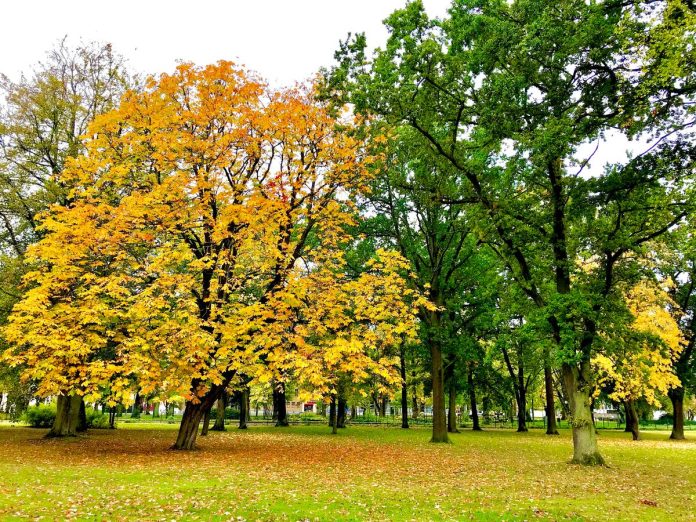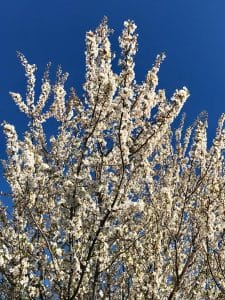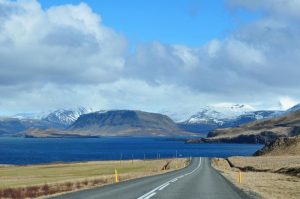
The world is losing 10 million hectares of forest each year due to deforestation – about the size of Iceland, Europe´s second biggest island. In addition, insects damage around 35 million hectares of forest annually. This is extremely serious, not least given the fact that forests are key to combating climate change. 21 March is the International Day of Forests.
Iceland, as a matter of fact, is an example of an early man-made ecological disasters. When people mostly of Nordic origin settled the uninhabited island in the late 9th century it was according to legend was generally forested.
„At the time of human settlement birch forest and woodland covered 25-40% of Iceland’s land area,“ say Edda Sigurdís Oddsdóttir and Arnór Snorrason, respectively heads of research and climate at the Icelandic Forest Service.

Photo: Vadid Levy/Norden.org/ Creative Commons (CC BY-NC-SA 4.0).
Forets were of course a source for fire wood, building material and simply eaten by the hundreds of thousands of sheep that have roamed the islands since the first settlers arrived. The extent of Icelandic birchwoods probably reached a minimum of 0.5-1% of total land area around the mid 20th century. In other words, there was hardly any forest left.
Nordic forests have recovered

Photo: Nikolaj Bock/norden.org/ Creative Commons (CC BY-NC-SA 4.0).
Although Iceland is a special and extreme case, forests in the other Nordic countries have also had their highs and lows.
To a varying degree forests have been essential in laying the foundation for the prosperity of Denmark, Finland, Norway and Sweden.
However, by the end of the 19th century the area covered by forests had vastly decreased. Reforestation, however, saved the vast Nordic forests and today, for instance, over 70% of Finland and Sweden is covered by trees.
In Denmark the tree coverage has been tripled since 1880 and the plan is a one-third increase by the end of the century, so it vill cover 20% of the country.

In all of the Nordic countries there are ambitious plans to recover lost forest. However, Finland has lost tree cover, equivalent to a 19% decrease since 2000.
Only 5% of Finland´s forest cover, is indeed more than 120 years old. And the forests are not the same as they used to be and in many cases they are commercial plantations characterised by monoculture.
In Iceland only 2% of the island is covered by trees and even that moderate amount has been achieved thanks to the efforts of the Icelandic Forest Service. „In about 120 years, we have managed to turn their decline around. Given more time and funding, it is possible for Iceland to recover some of its forest,“ Oddsdóttir and Snorrason say.
Importance for the climate

Climate Change is an added impetus to redouble efforts to regain the woods of old.
Indeed, afforestation has been named as part of Iceland´s climate strategy, along with soil conservation and reclamation of wetlands.
„Using afforestation, we have the possibility of sequestering a significant part, or even all of the CO2 released by Icelanders, depending on how much people are willing to invest,“ the specialists say.
Despite some controversy on alleged green washing, theey are adament that planting trees is an effective way of capturing and storing CO2. However, it is not a quick fix, since it is not effective until after 10-15 years. „Nothing much happens when the trees are very young and it takes time to be able to measure the effectiveness,“ they says.
„Carbon capture through forestry is without doubt a secure and good long term method to capture and sequester CO2 from the atmosphere.“
Forests and health

The theme for the International day of Forests 2023 is “Forests and health.” Forests give us so much to our health . They purify the water, clean the air, capture carbon to fight climate change, provide food and life-saving medicines, and improve our well-being. Several studies proved that a visit to a forest environment lowers blood pressure and pulse rate, and reduces cortisol levels.
Forests also play a crucial role in poverty alleviation and in the achievement of the Sustainable Development Goals (SDGs). Yet despite all these priceless ecological, economic, social and health benefits, forests are endangered by fires, pests, droughts, and unprecedented deforestation.
It’s up to us to safeguard these precious natural resources.




